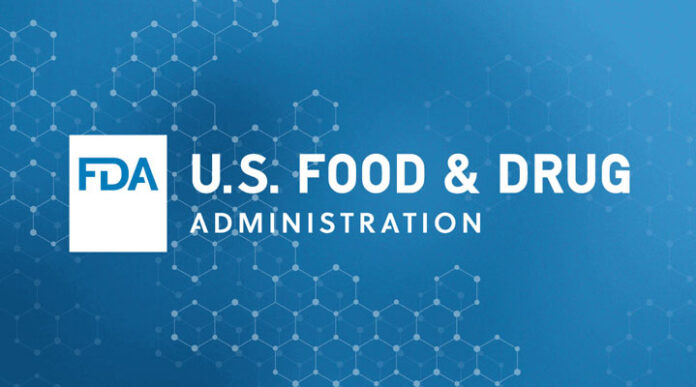Today, the U.S. Food and Drug Administration is providing an at-a-glance summary of news from around the agency:
- Today, the FDA updated the list of Breakthrough Devices that have been authorized for marketing. The list includes 56 Breakthrough Devices that the FDA has authorized for marketing. Online metrics show the number of granted Breakthrough Device designations by fiscal year and by clinical panel, which totals 728 as of September 30, 2022.
The Breakthrough Devices Program provides patients and health care providers with timely access to medical devices by speeding up their development, assessment, and review, while preserving the statutory standards consistent with the FDA’s mission to protect and promote public health. - On Thursday, the FDA cleared changes to Fresenius Medical’s 2008T hemodialysis machines that include use of modified silicone tubing in the hydraulics of the machine, specifically platinum catalyst silicone tubing. 2008T hemodialysis machines with modified silicone tubing will be shipped after October 27, 2022 and should be used according to their instructions for use.
The FDA continues to work with the manufacturer to further collect and evaluate data to determine the risk of exposure to non-dioxin-like (NDL) polychlorinated biphenyl acids (PCBAs) and NDL polychlorinated biphenyls (PCBs) on patients, as well as develop strategies to mitigate this issue, for 2008T hemodialysis machines with peroxide catalyst silicone tubing. The FDA recommendations in the May 6, 2022, letter to health care providers, Potential Risk of Exposure to Toxic Compounds When Using Certain Hemodialysis Machines Manufactured by Fresenius Medical Care, have not changed for 2008T hemodialysis machines shipped before April 21, 2022. - On Thursday, the FDA published the FDA Voices: “FDA Continues to Advance Medicines for Children,” by Dionna Green, M.D., Director, Office of Pediatric Therapeutics, Lynne Yao, M.D., Director, Division of Pediatrics and Maternal Health in CDER, and Barbara Buch, M.D., Associate Director for Medicine in CBER. The FDA recently completed 1,000 pediatric labeling changes, which is a milestone for the agency’s public health mission. This means 1,000 drugs contain information for pediatric use with the drug’s labeling information. Historically, more than 80 percent of approved drugs had no pediatric-specific labeling information. The FDA has made significant progress in making safe, effective treatment options available for children.
- On Wednesday, the FDA released a video entitled On Wednesday, the FDA released a video entitled “How Does the FDA Respond to Foodborne Outbreaks?” In the video, the FDA describes the often complex web of steps taken by the agency along with the Centers for Disease Control and Prevention (CDC) and local, state, and international public health authorities to respond to outbreaks in FDA regulated food products. The video explores how the CDC works with public health authorities to learn more about what might be making consumers sick, and then if an FDA regulated food product is identified, how the FDA investigates the cause of the outbreak and work with industry to remove any potentially contaminated product from store shelves.
- On Tuesday, the FDA granted accelerated approval to teclistamab-cqyv (Tecvayli), the first bispecific B-cell maturation antigen (BCMA)-directed CD3 T-cell engager, for adult patients with relapsed or refractory multiple myeloma who have received at least four prior lines of therapy, including a proteasome inhibitor, an immunomodulatory agent, and an anti-CD38 monoclonal antibody. The most common adverse reactions occurring in the study population included pyrexia, CRS, musculoskeletal pain, injection site reaction, fatigue, upper respiratory tract infection, nausea, headache, pneumonia, and diarrhea. For safety information on Tecvayli, including the risks and associated adverse reactions, read the prescribing information.
- On Tuesday, the FDA released a conversation with foods program leaders about how the Agency responses to foodborne illness, adverse event and consumer complaint reports. Each year, the FDA receives approximately 9,600 reports of foodborne illness or other adverse events related to FDA-regulated human food and dietary supplement products submitted by individual consumers, public health professionals, or industry. Coordinated Outbreak Response & Evaluation (CORE) Network evaluates an average of 75 incidents annually that may potentially constitute a national, multi-state outbreak. The conversation explores the challenges the FDA faces in responding to these reports and what improvements are underway.
- COVID-19 testing updates:
- As of today, 435 tests and sample collection devices are authorized by the FDA under emergency use authorizations (EUAs). These include 298 molecular tests and sample collection devices, 85 antibody and other immune response tests, 51 antigen tests, and 1 diagnostic breath test. There are 77 molecular authorizations and 1 antibody authorization that can be used with home-collected samples. There is 1 EUA for a molecular prescription at-home test, 2 EUAs for antigen prescription at-home tests, 19 EUAs for antigen over-the-counter (OTC) at-home tests, and 4 for molecular OTC at-home tests.
- The FDA has authorized 35 antigen tests and 8 molecular tests for serial screening programs. The FDA has also authorized 1145 revisions to EUA authorizations
- As of today, 435 tests and sample collection devices are authorized by the FDA under emergency use authorizations (EUAs). These include 298 molecular tests and sample collection devices, 85 antibody and other immune response tests, 51 antigen tests, and 1 diagnostic breath test. There are 77 molecular authorizations and 1 antibody authorization that can be used with home-collected samples. There is 1 EUA for a molecular prescription at-home test, 2 EUAs for antigen prescription at-home tests, 19 EUAs for antigen over-the-counter (OTC) at-home tests, and 4 for molecular OTC at-home tests.
Additional Resources:
Media Contact: FDA Office of Media Affairs, 301-796-4540
Consumer Inquiries: 888-INFO-FDA
The FDA, an agency within the U.S. Department of Health and Human Services, protects the public health by assuring the safety, effectiveness, and security of human and veterinary drugs, vaccines and other biological products for human use, and medical devices. The agency also is responsible for the safety and security of our nation’s food supply, cosmetics, dietary supplements, products that give off electronic radiation, and for regulating tobacco products.
SOURCE U.S. Food and Drug Administration





